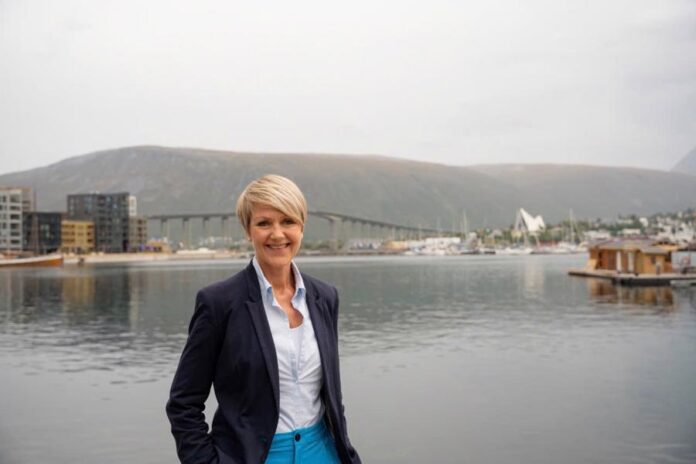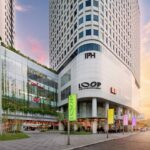In an interview with the Vietnam Economic Magazine/VnEconomy, Ms. Ashild Nakken, Director of the Norwegian Seafood Council (NSC) in Southeast Asia, revealed that Vietnam is one of the largest markets in Southeast Asia for Norwegian seafood products. Hence, Norway is committed to supporting Vietnam in developing its domestic fisheries and aquaculture sector.
What can you tell us about the achievements in the collaboration between Vietnam and Norway in developing the fisheries and aquaculture industry?
Norway considers Vietnam as a potential partner in seafood processing and re-export, recognizing the country’s modern infrastructure, technological advancements, and skilled labor force. The processing of Norwegian mackerel in Vietnam also testifies to the cooperation’s potential, bringing mutual benefits to both countries in the seafood value chain.
Norway is a leading nation in fisheries and aquaculture, with core values centered on sustainability, environmental protection, economic value enhancement, and global reputation for its seafood industry.
Vietnam also possesses significant potential in sustainably developing its aquaculture sector and responsible management. Through collaboration, knowledge sharing, and technology transfer, Norway and Vietnam can jointly develop green and sustainable production models, elevating the value, position, and brand of their seafood products in the international market.
Norway has played a crucial role in supporting Vietnam in drafting its first Fisheries Law. Given Vietnam’s orientation toward expanding marine and ocean aquaculture and Norway’s extensive experience in this field, we are in continuous dialogue with the Ministry of Agriculture and Environment to identify areas where we can share our expertise and contribute to the development of Vietnam’s fisheries and aquaculture sector.
How do you assess the potential of the Vietnamese market for Norwegian seafood?
The potential for Norwegian seafood in the Vietnamese market is immense. In 2024, Norway’s seafood exports to Vietnam surpassed 72,000 tons, valued at $252 million, marking a 20% increase in value and a 16% rise in volume compared to the previous year. These figures represent the highest levels ever achieved.
Exports of Norwegian salmon to Vietnam exceeded 24,000 tons, positioning Vietnam as one of the largest consumers of Norwegian seafood in Southeast Asia. Vietnam also ranks fifth among the fastest-growing markets for Norwegian seafood, following China, South Korea, the UK, and the Netherlands.

Our journey with seafood in Vietnam has just begun. With the rapid growth of the retail and culinary sectors, we are delighted to see Norwegian seafood gaining trust and popularity in the Vietnamese market.
Vietnam’s economic growth is projected to reach high levels by 2030, which means more consumers will have the opportunity to enjoy salmon and other seafood products from Norway.
Norway offers a diverse range of sustainably farmed seafood in cold, clean waters. In addition to salmon, we have started exporting brown crab to Vietnam and aim to expand with more seafood varieties.
Conversely, I believe Vietnamese seafood has the potential to thrive in Nordic markets like Norway. Some Vietnamese products, such as shrimp, are already present in the European market.
What are the Norwegian Seafood Council’s plans for the Vietnamese market, Ms.?
The Norwegian Seafood Council (NSC) will closely collaborate with partners in the retail and culinary sectors to ensure that Vietnamese consumers can enjoy high-quality Norwegian seafood in restaurants and at home. NSC will continue to enhance awareness, marketing campaigns, local partnership development, training programs such as the Norwegian Salmon Academy, and strategic connections within the industry.
Norway’s commitment to sustainability, transparency, and responsible seafood sourcing aligns with the values of Vietnamese consumers, among whom 82.2% prioritize sustainably sourced seafood options. The “Seafood from Norway” label guarantees the quality and origin of Norwegian seafood, and we encourage our industry partners to use this label to enhance their products’ value in the market.
NSC remains dedicated to accompanying Vietnamese consumers, offering the finest seafood from Norway’s cold and pristine waters through a nationwide network of retail and culinary distribution channels.
Based on Norway’s long-standing experience in seafood exploitation, what solutions would you suggest for Vietnam to soon be removed from the IUU “yellow card” imposed by the European Commission (EC)?
Drawing from Norway’s experience, the key to sustainable and trustworthy fisheries management lies in establishing a transparent, enforceable, and reliable system, both domestically and internationally. Based on our expertise, I would like to emphasize three essential areas that Vietnam could further strengthen in the future.
Firstly, digitalization and traceability. In Norway, every fish can be traced from sea to table. We implement mandatory electronic reporting for catch volume, vessel location, and port calls, all integrated in real-time. A centralized digital system enables both authorities and buyers to verify the provenance of seafood at every step. Developing such a seamless system not only builds trust with the market but is also a critical requirement to meet EU standards.
Secondly, enforcement and deterrence. Norway achieves high compliance by combining risk-based inspections with stringent sanctions. Violating vessels face severe consequences, ranging from hefty fines to criminal prosecution and license revocation. Enforcement must be fair yet stringent, and any infractions should be consistently addressed at all levels, from on-sea, at ports, to transportation.
Thirdly, and perhaps most importantly, stakeholder engagement. Norway’s system works effectively because the fisheries industry is part of the solution. Fishermen, processing companies, and authorities collaboratively develop regulations and share responsibilities in safeguarding sustainability. Outreach, training, and co-management mechanisms contribute to a culture of compliance.
In your opinion, what should Norway and Vietnam do to strengthen their economic cooperation, especially in the fisheries and aquaculture sector, in the coming time?
To further enhance cooperation in the fisheries and aquaculture sector, Norway and Vietnam should focus on five strategic areas.
Firstly, technology transfer and knowledge sharing. Norway’s extensive experience in sustainable marine farming can significantly support Vietnam’s goal of developing large-scale, environmentally friendly marine aquaculture.
Secondly, the two countries should materialize the 2021 letter of intent on aquaculture cooperation into joint projects to build Vietnam’s capacity in this emerging field.
Thirdly, we see great potential in research collaboration, especially in climate-resilient aquaculture, disease management, and sustainable feed solutions. These are shared challenges where cooperative innovation can bring long-term benefits.
Fourthly, we encourage more Norwegian investments in Vietnam’s seafood value chain, spanning from breeding, farming, processing to logistics. The presence of Norwegian businesses currently operating in Vietnam lays a solid foundation for expanded commercial cooperation.
Fifthly, both parties should intensify training and capacity-building efforts. Providing more opportunities for Vietnamese experts to learn from their Norwegian counterparts in aquaculture, fisheries management, and seafood processing will contribute to skilled human resources and promote sustainable growth in the industry.
“IPH Tower Achieves Prestigious LEED Platinum Certification.”
In April 2025, IPH Office Tower and The Loop Mall were proudly awarded the prestigious LEED v4.1 Platinum certification – the highest rating in the global green building assessment system by the U.S. Green Building Council (USGBC).
“TTC AgriS: Strategic Partnership with the Ministry of Agriculture and Environment”
On May 10, 2025, in Bac Ninh, TTC AgriS took a giant leap forward in the agricultural sector by partnering with the Ministry of Agriculture and Environment. This strategic collaboration marks a pivotal moment as we pioneer the implementation of Resolution 57-NQ/TW, leading the way in the digital transformation of circular agriculture.
SHB – Where Over 100,000 Shareholders Place Their Trust, Joining Forces for Mutual Growth and Breakthrough in the New Era.
SHB is currently one of the listed companies with the largest number of shareholders in the market. This fact underscores the trust that shareholders have placed in SHB, despite market fluctuations. Beyond just an investment, the relationship between SHB and its shareholders has evolved into a bond forged through transparency, accountability, and a long-term vision. Each annual general meeting of shareholders (AGM) is akin to a festival, bringing together thousands of enthusiastic shareholders and proxies.








![[Photo Essay]: Experts, Managers, and Businesses Unite to Forge a Path Towards Sustainable Green Industry](https://xe.today/wp-content/uploads/2025/07/z678592918-218x150.jpg)












